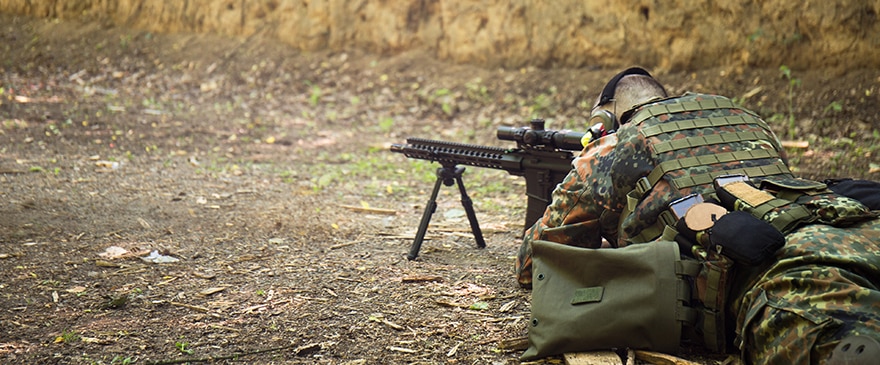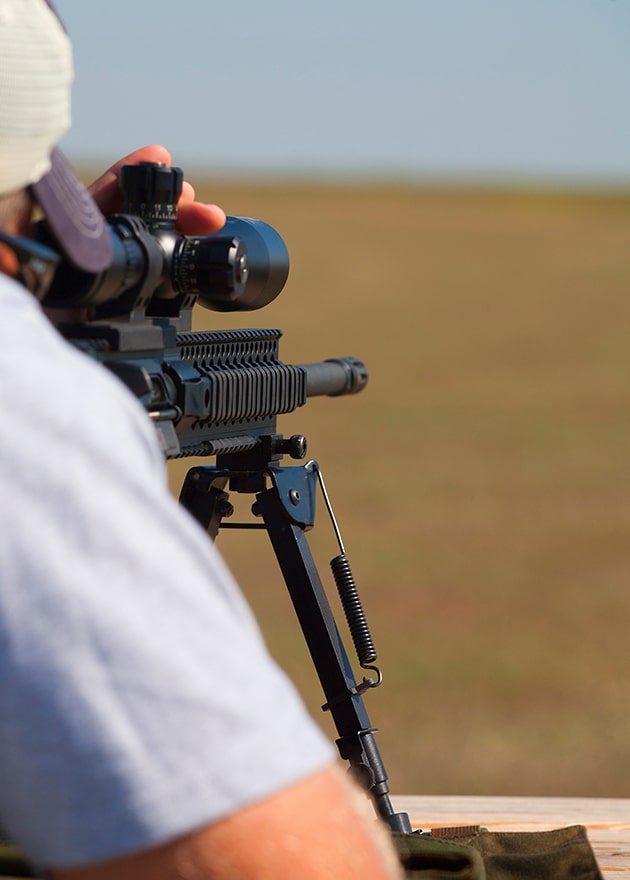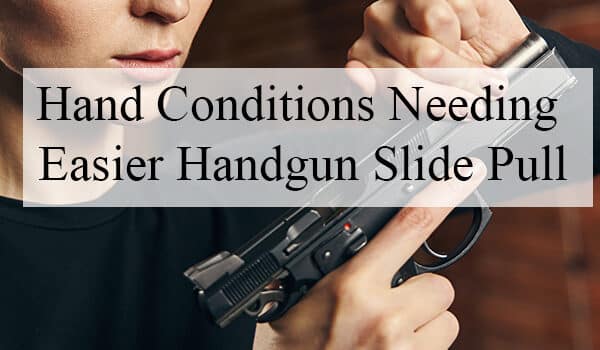Is the Two-Stage Trigger Right For Your Situation?
Welcome to our comprehensive guide to the advantages of two-stage AR-15 triggers. Two-stage triggers spark much debate and discussion. It’s helpful to understand the differences and benefits these triggers offer. This article will explore the advantages of two-stage triggers over single-stage triggers commonly used in AR applications and why precision shooters and professionals favor them in high-stress situations.
Table of contents
- Is the Two-Stage Trigger Right For Your Situation?
- Understanding Single-Stage Triggers
- Exploring Two-Stage Triggers
- Benefits of Single-Stage Triggers
- Advantages of Two-Stage Triggers in Precision Shooting
- Two-Stage Triggers in High-Stress Situations
- Choosing the Right Trigger for Your Needs
- Consider Application When Selecting a Trigger
- Seek Advice and Gather Experience
- Conclusion: The Advantages of Two-Stage AR-15 Triggers
- FAQs: The Advantages of Two-Stage AR-15 Triggers
Understanding Single-Stage Triggers
Single-stage triggers are the go-to choice for AR applications, including mil-spec rifles. These triggers offer a smooth and consistent pull from start to finish, providing shooters with a reliable and easy-to-use experience. With a crisp break and imperceptible over-travel, single-stage triggers are favored by many for their simplicity and predictable performance.

Unlike their two-stage counterparts, single-stage triggers have a consistent pull weight throughout, eliminating the need to navigate multiple stages. This seamless operation allows for faster split times, making them ideal for situations that require quick and decisive shots.
Shooters often appreciate the surprise break of a single-stage trigger, as it enhances their ability to react swiftly when aiming at a target. This trait makes single-stage triggers particularly popular among competitive shooters who value speed and familiarity.
Exploring Two-Stage Triggers
Regarding AR-15 triggers, two-stage triggers offer a distinct shooting experience with increased precision and improved control. These triggers have a unique characteristic known as the “wall” just before the break, where the trigger weight noticeably increases. This feature allows shooters to “prep” the trigger by taking up the slack in the first stage before applying additional pressure to break the shot.

By utilizing the two stages of the trigger, shooters can enhance their control over the firearm and reduce the risk of accidental discharges, especially in high-stress situations. The second stage wall provides additional assurance, ensuring deliberate shooting.
“Having that moment to fully engage the trigger and stabilize my aim before the break significantly improved my accuracy and confidence.”
Benefits of Single-Stage Triggers
Single-stage triggers offer several advantages, particularly in terms of simplicity and speed. They are widely used in factory gun building due to their lower cost and ease of manufacturing. But what sets them apart from two-stage triggers?
- Faster Split Times: Single-stage triggers can result in faster split times on a millisecond level. This means that shooters can quickly fire follow-up shots, which can be crucial in competitive shooting or tactical situations.
- Precise Shooting: While they may not provide the same level of control as two-stage triggers in high-stress situations, single-stage triggers are highly reliable and allow precise shooting. Their consistent trigger pull weight ensures a consistent break, improving accuracy.
While single-stage triggers may not offer the same level of control as two-stage triggers, they are still popular among shooters who value simplicity, speed, and precise shooting.
Advantages of Two-Stage Triggers in Precision Shooting
When it comes to precision shooting, two-stage triggers offer distinct advantages. These triggers are designed to enhance accuracy and increase precision, making them a top choice for shooters who demand the utmost control and consistency.
One of the key advantages of two-stage triggers is the ability to “prep” the trigger in the first stage. This unique feature allows shooters to eliminate the human element and achieve greater accuracy. By pressing through the first stage and breaking the shot at the second stage, shooters can maintain stability and control for precise shots.
The two-stage design also helps reduce trigger flinch, which can negatively impact accuracy. With a traditional single-stage trigger, the sudden break can cause shooters to anticipate the shot, leading to involuntary movements and decreased precision. In contrast, the distinct stages of the two-stage trigger provide a smoother and more controlled shooting experience.

A More Deliberate Shot Process
Furthermore, two-stage triggers allow for a more deliberate shot process. Shooters can take up the slack in the first stage to ensure their finger is properly positioned before applying more pressure to break the shot. This additional control is especially valuable in precision shooting scenarios where split-second decisions can mean the difference between hitting or missing the target.
“The two-stage trigger provides enhanced control and consistency, enabling shooters to achieve accuracy and precision; it’s the go-to choice for those who require the utmost control over their shots.”
Two-Stage Triggers in High-Stress Situations
Two-stage triggers shine in high-stress and high-adrenaline situations where accuracy and control are crucial. These triggers are preferred by military operators, police officers, and SWAT team members who rely on their ability to “prep” the trigger and ensure a deliberate shot. The distinct second-stage wall provides added control and reduces the risk of accidental discharges, even under immense pressure. For those operating in tactical and defensive realms, two-stage triggers offer peace of mind and increased safety.
Choosing the Right Trigger for Your Needs
When selecting the perfect trigger for your AR-15, choosing between single-stage and two-stage triggers is a decision that depends on your intended purpose and personal preferences. To make an informed choice, consider the specific application and realistic scenarios in which you’ll use the firearm.

If you primarily engage in competition shooting, where speed and familiarity are paramount, a single-stage trigger may be your ideal option. Single-stage triggers offer a consistent and smooth pull from start to finish, allowing for quick and precise shots. They are commonly used in AR applications, including mil-spec rifles, and are favored by shooters who prioritize a smooth trigger pull.
On the other hand, if you’re involved in long-range shooting or high-stress situations where control and accuracy are crucial, a two-stage trigger can provide distinct advantages. Two-stage triggers have a unique design that allows for a two-part trigger pull a first stage with a lighter pull weight and a second stage with a crisper break. This design enables shooters to “prep” the trigger by taking up the slack in the first stage before applying more pressure to break the shot, resulting in increased control and improved accuracy.
Try Different Triggers
It’s important to note that precision shooters often favor two-stage triggers requiring enhanced control and stability for long-range shots. Additionally, in high-stress situations such as military operations or tactical engagements, the two-stage design minimizes the risk of accidental discharges, providing shooters with peace of mind and increased safety.
We recommend trying different options and assessing how they feel and perform in your shooting style and preferred scenarios to find the right trigger for your needs. Each shooter is unique, and what works for one may not work for another. By experimenting with different triggers and seeking advice from experienced shooters, you can make an educated decision that will elevate your shooting experience.
Consider Application When Selecting a Trigger
Several important factors must be considered when choosing a trigger for your firearm. Evaluating the intended purpose of your weapon and understanding your comfort level with different trigger designs will help guide you toward the right choice. Whether you’re planning on competition shooting or hunting, require precise control in high-stress situations, or simply want to enhance your shooting accuracy, selecting the right trigger is key to achieving your goals.

Competition Shooting vs. Hunting
Consider the specific shooting activities you plan to engage in. If you’re primarily focused on competition shooting, you may prioritize fast trigger pull and a smooth reset for quicker follow-up shots. On the other hand, if you’re primarily a hunter, you might want to prioritize precision and accuracy, which often require a lighter trigger pull for improved marksmanship.
Precise Control in High-Stress Situations
If you anticipate using your firearm in high-stress situations, such as tactical or self-defense scenarios, a trigger that provides enhanced control can be essential. Two-stage triggers, with their distinct “wall” before the break and increased trigger weight, allow you to maintain control and prevent accidental discharges, even under pressure. The added control provided by two-stage triggers can be vital in critical moments where split-second decisions matter.
Familiarity with Different Trigger Types
Consider your experience and familiarity with different trigger designs. If you’re accustomed to single-stage triggers and have developed a shooting technique that relies on their consistent pull, you may find adapting to the distinct two-stage trigger system more challenging. Conversely, suppose you’ve had prior experience with two-stage triggers and appreciate their increased accuracy and control advantages. In that case, you might be more inclined to choose them for your firearm.
Prioritize Safety and Proficiency
Safety should always be a top priority, regardless of your trigger. Ensure that you are proficient and comfortable with the trigger of your choice. Please familiarize yourself with its purpose, function, and potential adjustments. Regular training and practice will help you develop the necessary skills to handle your firearm safely and effectively.
Research and Test Triggers
Take the time to research reputable brands and their offerings. Read reviews, watch videos, and seek recommendations from experienced shooters. If possible, try out different triggers in person to get a feel for their performance and determine which one aligns with your shooting preferences. By exploring various options, you can make an informed decision and find the right trigger that enhances your shooting experience and accuracy.
Seek Advice and Gather Experience
When choosing the right trigger for your AR-15, seeking advice from experienced shooters and gathering firsthand experience is invaluable. By consulting with those who have practical knowledge of different trigger options, you can gain valuable insights and make more informed decisions.
One way to expand your understanding of triggers is to visit local ranges and firearm events. These venues often provide the opportunity to try out various firearms and triggers, allowing you to experience firsthand how different triggers feel and perform.
Gathering knowledge and experiencing different trigger options, you can better understand your shooting preferences and determine what works best for you.
Finding a trigger that enhances your shooting experience is the ultimate goal. Whether you prioritize improved control with a two-stage trigger or prefer the speed and familiarity of a single-stage trigger, taking the time to seek advice and gather experiences will ultimately lead to a more satisfying shooting experience.
Conclusion: The Advantages of Two-Stage AR-15 Triggers

The debate between single-stage and two-stage triggers will always exist, as shooters have different preferences and shooting requirements. Both trigger types have their advantages and excel in specific situations. Consider your firearm’s intended purpose, shooting style, and comfort level with different triggers. In the end, the choice is yours, and the best trigger is the one that suits your needs and enhances your shooting precision and control.
Lastly, if you own a variety of rifles for different purposes, you will likely have different triggers in different firearms to optimize performance.
Key Takeaways:
- Two-stage triggers have two distinct stages, providing increased control and improved accuracy.
- Single-stage triggers offer a consistent pull weight throughout, suited for speed and simplicity.
- Two-stage triggers excel in precision shooting, allowing shooters to “prep” the trigger for greater accuracy.
- They also shine in high-stress situations, reducing the risk of accidental discharges.
- Choosing the right trigger depends on your intended purpose and personal preferences.
FAQs: The Advantages of Two-Stage AR-15 Triggers
Two-stage triggers offer enhanced accuracy, improved control, and reduced trigger pull weight for increased precision.
Single-stage triggers have one consistent pull weight from start to break and provide a smooth trigger pull.
Two-stage triggers have two distinct stages, with a significant increase in trigger weight just before the break. They allow shooters to “prep” the trigger for added control and reduced risk of accidental discharges.
Two-stage triggers allow shooters to “prep” the trigger and achieve greater accuracy by maintaining stability and control during the second stage before breaking the shot.
Two-stage triggers provide improved control and reduced trigger pull weight, making them ideal for high-stress scenarios where accuracy and control are crucial.
Consider factors such as the intended purpose of your firearm, the level of control required, and your comfort level with different trigger designs.
When selecting a trigger, consider factors such as the intended purpose of your firearm, the need for enhanced accuracy, and your familiarity with different trigger types.
Yes, seeking advice and gathering hands-on experience with different triggers is recommended to make an informed decision that aligns with your shooting needs and preferences.
Two-stage triggers offer enhanced accuracy, improved control, and increased precision, making them preferred for precision shooting and high-stress situations.



